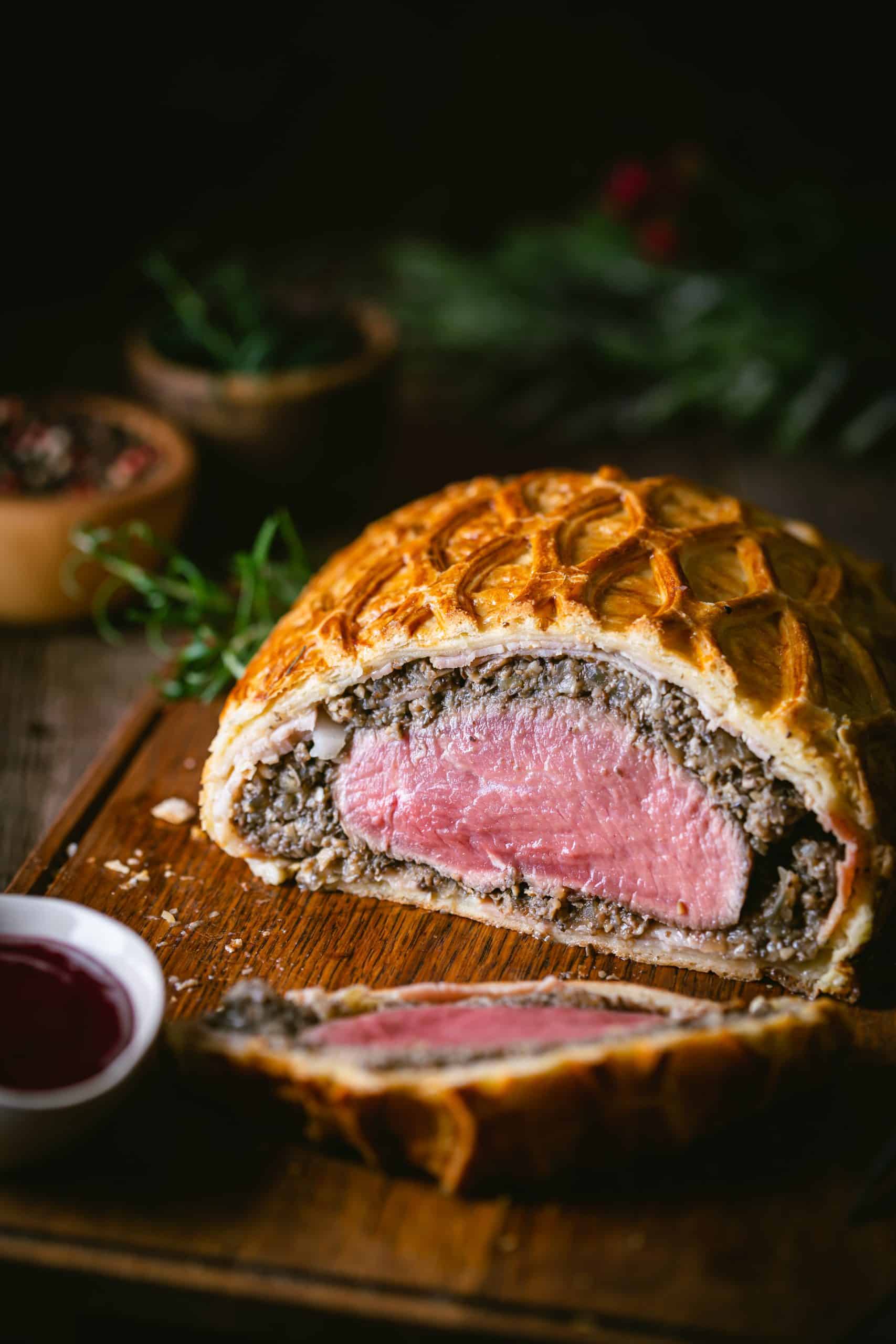Nothing creates a more mouthwatering aroma in the kitchen than a perfect, juicy roast cooking in the oven. The art of roasting is steeped in tradition and, when executed correctly, can transform even the most mundane cuts of meat into succulent, flavor-packed meals. This article will share some of the best techniques and secrets to achieving the perfect roast.
Choosing the Right Cut of Meat
When it comes to roasting, not all cuts of meat are created equal. The cut you choose will vastly affect the final texture and flavor of your roast.
A voir aussi : The art of japanese sushi and sashimi
Beef, for instance, offers many options for roasting. Prime rib is a popular choice, with its rich marbling of fat promising a moist and flavorful result. Other options include beef tenderloin, which is leaner but incredibly tender, or a rib roast, a less expensive cut that still delivers on flavor.
Pork, on the other hand, offers different cuts more suitable for roasting, such as a pork loin or shoulder roast. These cuts are often marinated or rubbed with spices before roasting, to enhance their natural flavors.
A lire aussi : Easy weeknight stir-frys: fast and flavorful
Remember, a good cut of meat is fundamental to the success of your roast. It’s worth investing in quality pieces from a reputable butcher, who can also provide expert advice on the best cuts for roasting.
Preparing Your Meat for Roasting
Once you’ve chosen your cut of meat, proper preparation is the next crucial step. The meat should be brought to room temperature before roasting to ensure even cooking.
You can enhance the flavor by marinating the meat or applying a rub of herbs and spices. For beef, simple seasonings like salt, pepper, and garlic are often enough. Pork, however, might benefit from a more complex blend of spices, or a sweet glaze to contrast its inherently savory flavor.
Don’t forget to preheat the oven. This might seem trivial, but starting with a hot oven will seal the meat’s surface, locking in the juices and ensuring a crispy exterior.
Understanding Roasting Temperatures
Getting the roasting temperature right is crucial in the art of roasting. Too low, and your meat may end up tough and lacking in flavor. Too high, and it may burn on the outside before it’s cooked on the inside.
Start with a high heat to sear the meat and create a delicious, caramelized exterior. Then, reduce the heat to cook the inside to your desired level. A meat thermometer is an invaluable tool here. For medium-rare beef, aim for an internal temperature of about 135°F. For pork, the USDA recommends an internal temperature of 145°F.
Utilizing the Right Cookware
The pan you choose for roasting can have a significant effect on the outcome. Heavy-bottomed roasting pans are best, as they distribute heat evenly. This results in a more uniform roast.
Pans with a rack are also beneficial. The rack lifts the meat off the pan’s bottom, allowing heat to circulate around it for even cooking. The space beneath the rack also serves to catch any drippings, which can be used to make a flavorful gravy or sauce.
Incorporating Vegetables into Your Roast
A roast isn’t complete without a medley of vegetables to accompany it. Root vegetables such as potatoes, carrots, and parsnips are classic choices. They can be placed in the same pan as the meat, where they’ll roast in the meat’s juices and take on some of its flavor.
Vegetables should be cut into even pieces to ensure uniform cooking. Toss them in a little oil, then season with salt, pepper, and any herbs or spices you like.
Resting and Serving Your Meat
Once your meat has reached the desired temperature, remove it from the oven and let it rest. Resting allows the juices to redistribute throughout the meat, resulting in a moist, tender roast. This is a step you certainly don’t want to skip.
When it’s time to serve, slice against the grain for the tenderest result. Serve alongside your roasted vegetables, and enjoy the fruits of your labor. The perfect roast is more than just a meal – it’s a true culinary accomplishment.
Mastering the Art of Seasoning
Seasoning is a fundamental step in the art roasting process. The right combination of seasonings can bring out the natural flavors of the meat and create a delicious crust on the outside.
For a classic roast beef, a simple rub of salt, pepper, and olive oil is often enough to enhance the flavor of the meat. Some cooks also like to add herbs such as thyme, rosemary, or garlic for additional flavor. Your chosen cut of meat, whether it’s a prime rib, rib roast, or pot roast, will dictate the best seasoning choices. Remember to season generously, ensuring the entire surface of the meat is covered for a flavorful crust.
Pork roasts can also benefit from a flavorful rub. Consider combining brown sugar, paprika, garlic powder, and mustard for a sweet and savory crust that complements the meat’s natural flavor. For a more unique twist, experiment with flavors like fennel, cumin, or even a hint of cinnamon.
Regardless of the type of roast, apply your seasoning rub at room temperature and let it sit for at least an hour before cooking. This will allow the seasoning to penetrate the meat, infusing it with flavor.
A meat thermometer is an invaluable tool in this process, ensuring you reach the desired internal temperature without overcooking the exterior. For a medium rare roast beef, aim for an internal temperature of 135°F; for pork, the USDA recommends 145°F.
Exploring the Variety of Roasting Food
While the focus of this article is primarily on meat, the art of roasting extends far beyond beef and pork. Virtually any food can be roasted, from vegetables to poultry and seafood.
Chicken, for example, is a staple in many households and can be roasted to perfection with the right technique. Like beef or pork, it benefits from being brought to room temperature before cooking, and should be seasoned generously to enhance its flavor. A simple rub of olive oil, salt, pepper, and herbs such as rosemary or thyme works well for chicken.
Fish is another excellent candidate for roasting. A whole fish, such as salmon or sea bass, can be roasted with a drizzle of olive oil, a sprinkle of salt and pepper, and a few slices of lemon for added flavor.
When roasting vegetables, the same rules apply. Use a dry heat, toss them in a bit of olive oil, and season as desired. Root vegetables like carrots, parsnips, and potatoes are excellent when roasted, as their natural sugars caramelize in the heat, lending a sweet and savory flavor.
Conclusion
In conclusion, mastering the art of roasting is a combination of understanding the basics of the cooking process and being willing to experiment with flavors, cuts of meat, and cooking times. From selecting the prime grade cut, seasoning generously with salt and pepper, to reaching the right internal temperature, every step plays a role in the final product.
A properly roasted piece of meat or vegetable can be a thing of beauty, with a crispy exterior and a flavorful, juicy interior. Whether you’re a seasoned chef or a home cook looking to impress at your next family meal, the art of roasting is a skill worth acquiring.
Remember, the magic of roasting lies not just in the end result, but in the entire process – from the anticipation that builds as the aroma fills your kitchen, to the satisfaction of slicing into a perfectly cooked roast. It’s a culinary journey, and one that’s certainly worth taking.











